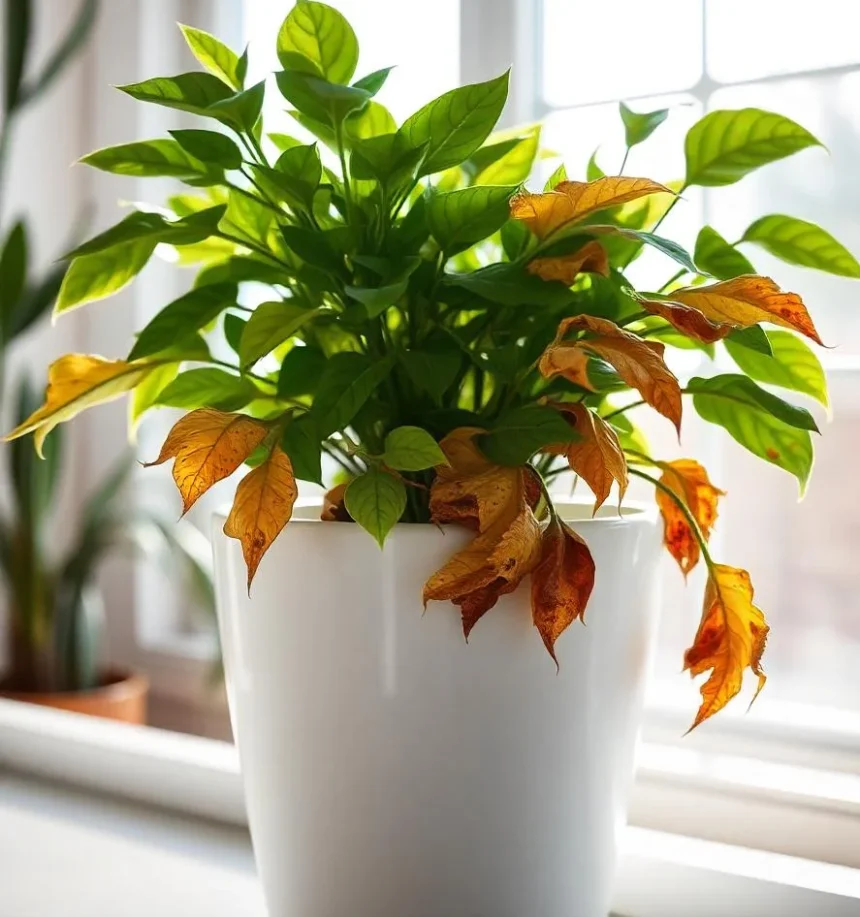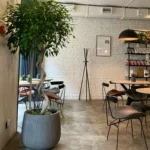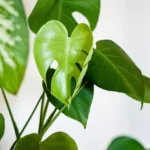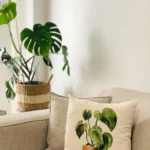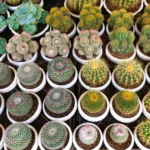Indoor plants enhance the beauty of your house, but sometimes taking care of them becomes so overwhelming. From browning of leaves to infestation, the common problems of houseplants drive plant parents crazy. Fortunately, most of the common problems are pretty easy to rectify if you know where to look for the cause. More common houseplants problems and some handy solutions from our side to return those plants back to full vigor will be discussed in this article.
1. Brown Leaf Tips
What Every Plant Parent is Tired of Hearing: The Dreaded Brown Leaf Tips This can occur in plants that are not receiving high enough humidity or the water/nutrient balance is off.
Causes:
Low Humidity: Plants love humidity, especially tropical plants. The browning of the tips is because dry air causes them to lose moisture.
Fertilizer Imbalance: If you use too much fertilizer, salt can build up in your soil and damage the roots of trees and plants imbalanced.
Inconsistent watering schedules can cause the plant to go into shock leading it browning.
Solutions:
- Humidify your air with a humidifier or increase humidity the natural way by group plants, and place cups of boiling water nearby.
- Reduce fertilizer for a while and give warm, filtered water to the plant until some salt deposit from previous use runs out of the soil.
- Keep a consistent watering schedule for each plant.
2. Yellowing Leaves
Yellowing leaves are a symptom for various different problems such as wrong watering or less light. However, if it happens on the older leaves then maybe yellowing is common as part of a plant growth cycle.
Causes:
This could be overwatering or underwatering: this is when plants become yellowed from improper watering, which can mean either too much water or not enough. Root rot will occur if there is too much water, and stress from underwatering.
The lack of light: if your plant is not in the most suitable place without proper lighting, it will shed leaves to save energy.
Nutrient Deficiency: Plants are used to have nutrients supplied for healthy leaves, so a lack of fertilizer will result in yellow foliage.
Solutions:
- Examine soil and root to know if the plant has received an excess water or less amount of it, you can make sure its watering need.
- Make sure your plant is getting the proper amount of light it requires. You might choose to relocate it closer to a window or provide some grow lights.
- Apply a weak organic fertilizer throughout the summer to keep your plant fed.
3. Curling or Drooping Leaves
If leaves either are curled up or drooping, that is a symptom something is wrong with the plant. It could be something with lack of water or infestation.
Causes:
Underwatering: The need for water in a plant results in leaves curling or drooping due to not having enough water within the plant.
Root Rot: Overwatering may cause root rot, which impairs a plant’s ability to take in water.
Pest Infestations: Spider mites and thrips are common causes of curled or deformed leaves.
Solutions:
- Watering: Water your plant abundantly, but allow, depending on the type of your plant, some time to pass in between waterings so that the soil partially dries.
- Check for root rot: If you find root rot, take the plant out and change the fresh soil, pruning the decayed roots.
- Treat pests with a neem oil solution and immediately isolate the infested plants to contain the problem.
4. Fungal Infections (Spots on Leaves)
Brown, yellow spots are seen surrounded by rings indicative to stem and leaves affected with fungal infections.
Causes:
Fungus Diseases grow where it is damp, and there is little air circulation.
OVERWATERING: If soil is too frequently waterlogged it will damage leaves and roots with fungal growth.
Solutions:
- These infected leaves should then be removed and disposed of straight away (do not add compost). Exclusively keep the plant to avert distribution
- Spray with a mixture of baking soda, water and neem oil (treat early sign to catch it) Clean the leaves before applying spray.
- Provide more air flow and reduce humidity by separating plants so they are not crowded together.
5. Leggy or Leaning Growth
The extension of the plant refers to growth, but it is usually weak due to insufficient light.
Causes:
No Light- If your plants are stretching and leaving gaps between them, there is a possibility that they do not have enough light as will stretch the leaves and stems towards nearest source of light.
However uneven light exposure is definitely a possibility
Solutions:
- Turn your plant every so often to help spread the light.
- Find a location that has more natural light or even consider the purchase of grow lights to help keep your plant healthy.
Most of the common houseplant problems are usually solvable with just a little care and attention. If you know what your plant is telling you, you can find out what’s wrong and help fix those underlying issues. Consistency in water, light, and humidity is key to happy indoor plants. Happy planting!

